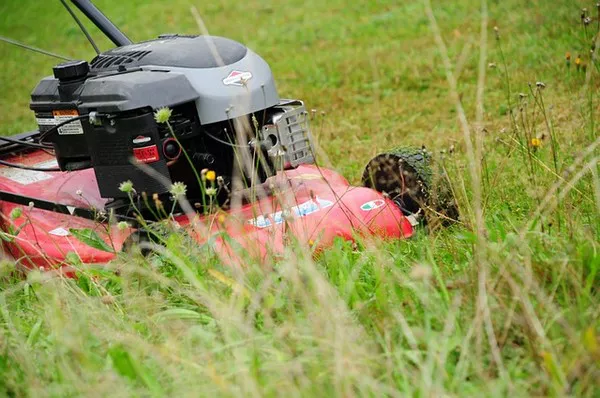Maintaining a lush, green lawn is a rewarding endeavor for many homeowners. However, one of the most crucial aspects of lawn care is mowing, and a common question arises: How long should I cut my grass? The answer isn’t as straightforward as one might think; it involves understanding the type of grass you have, seasonal considerations, and the specific needs of your lawn. In this article, we’ll explore these factors in detail to help you achieve the best results for your lawn.
Understanding Grass Types
Before determining how short to cut your grass, it’s essential to identify the type of grass you have. Grass species can broadly be categorized into two types: cool-season grasses and warm-season grasses. Each type has different growth patterns and optimal mowing heights.
Cool-Season Grasses
Cool-season grasses thrive in the northern regions of the United States and are best suited for areas where temperatures are mild. Common varieties include Kentucky bluegrass, tall fescue, and perennial ryegrass.
Optimal Height: Cool-season grasses should generally be mowed to a height of 2.5 to 4 inches.
Mowing Strategy: During the peak growing seasons in spring and fall, aim for the higher end of this range. In summer, when growth slows down due to heat, you can let them grow slightly taller before mowing.
Warm-Season Grasses
Warm-season grasses flourish in the southern regions and are more heat-tolerant. Common types include Bermuda grass, zoysia grass, and St. Augustine grass.
Optimal Height: For warm-season grasses, the recommended mowing height is typically 1 to 3 inches.
Mowing Strategy: During their peak growing season in late spring and summer, maintain your lawn at the lower end of this range to promote healthy growth and discourage weeds.
The Importance of Mowing Height
The height at which you mow your lawn is crucial for several reasons:
Root Development: Taller grass promotes deeper root systems. Deeper roots can better access moisture and nutrients from the soil, leading to a healthier lawn.
Weed Control: Maintaining the proper height helps shade the soil, reducing the chances of weed germination. Taller grass can outcompete weeds for sunlight and resources.
Disease Resistance: Longer grass blades can help protect the crown of the plant from diseases. Short mowing can expose grass to stress and susceptibility to disease.
Water Conservation: Grass kept at a longer height retains moisture more effectively, which is especially beneficial during hot summer months.
Seasonal Considerations
The time of year also plays a significant role in determining how short to cut your grass. Adjusting your mowing height according to the season can help maintain lawn health.
Spring
In spring, grass begins to grow vigorously as temperatures rise. It’s essential to avoid cutting your grass too short during this period.
- Recommended Height: For cool-season grasses, maintain a height of 3 to 4 inches; for warm-season grasses, aim for about 2 to 3 inches.
- Frequency: Mow regularly, every 5 to 7 days, as growth will be rapid.
Summer
Summer can present challenges due to heat and drought conditions. To help your lawn endure these conditions:
- Recommended Height: For cool-season grasses, allow them to grow to 3 to 4 inches. For warm-season grasses, maintain a height of 1.5 to 2.5 inches.
- Mowing Strategy: Mow less frequently, around every 7 to 14 days, depending on growth rate and weather conditions. Consider using a mulching mower to return nutrients to the soil.
Fall
As temperatures cool in the fall, grass growth slows.
- Recommended Height: For cool-season grasses, maintain a height of 2.5 to 4 inches. For warm-season grasses, keep them at 1.5 to 3 inches.
- Preparation for Winter: Consider mowing a bit shorter at the end of the season to prepare for winter dormancy, but avoid scalping, which can damage the grass.
Winter
Most grass types go dormant in winter. There’s typically no need for mowing, but if your lawn is prone to snow mold, consider a final cut in late fall to minimize this risk.
Techniques for Effective Mowing
To ensure optimal lawn health, employing proper mowing techniques is as crucial as determining the right height.
1. Use Sharp Blades
Ensure that your mower blades are sharp. Dull blades can tear the grass, leading to frayed edges that make the lawn more susceptible to disease. Sharp blades provide a clean cut, promoting healthier grass growth.
2. Mow When Dry
Mowing when the grass is wet can lead to uneven cuts and clumping. It’s best to mow when the grass is dry, ideally in the late afternoon or early evening, when the sun is less intense.
3. Vary Your Mowing Pattern
Changing your mowing pattern each time you mow can prevent soil compaction and promote even growth. Alternate between vertical, horizontal, and diagonal patterns.
4. Avoid Scalping
Scalping occurs when grass is cut too short, exposing soil and roots. This can lead to stress, weed problems, and disease. Always follow the recommended height for your specific grass type.
5. Mow at the Right Time
Timing is critical for effective mowing. Mow when grass is actively growing, and avoid mowing during peak heat hours in summer or when temperatures drop in fall.
See Also The Cost of Robot Lawn Mowers
Conclusion
Determining how long to cut your grass requires consideration of the type of grass you have, seasonal changes, and effective mowing techniques. By maintaining the proper height, you can promote a healthy, resilient lawn that thrives throughout the year.
Whether you have a cool-season or warm-season lawn, adjusting your mowing practices can enhance grass health, reduce weed growth, and improve overall lawn appearance. Remember, a well-maintained lawn is not only aesthetically pleasing but also contributes positively to your home’s value and the environment.
In summary, take the time to understand your lawn’s specific needs, stay consistent with your mowing schedule, and adjust the height based on seasonal changes. Your efforts will result in a vibrant, healthy lawn that can be enjoyed throughout the seasons. Happy mowing!
You Might Be Interested In


